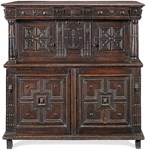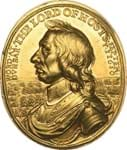At a time when mechanisation and plastics were making pens cheaper, the pair hit on the idea of creating deluxe items using the painstaking Japanese maki-e technique that involved sprinkling coloured metal flakes or powders onto wet lacquer.
Flat-top fanciness
Two Dunhill-Namiki (Namiki Manufacturing Co) pens were offered by East Bristol Auctions (18.5% buyer’s premium) on January 14.
Both had the flat tops associated with pens made during the 1920s (those with torpedo-shaped, tapered ends are typically later) and were entirely covered with maki-e decoration, marking them as the firm’s most expensive issues.
The more desirable of the two was 5in (13cm) decorated – with the addition of abalone shell – by a dragon in gilt relief (takamaki-e) to the barrel and a mountainous scene to the cap. For three-dimensionsal decoration such as this, four, five, or even more layers of lacquer could be applied.
As well as the Namiki logo that appears to the 14ct gold mounts, it is signed by the artist Shogo (b.1894) below the lever.
He was Namiki’s first artist who joined the company in 1928 and became the leading member of its Kokkokai group of decorators assembled by the master artist Gonroku Matsuda in 1931.
The pen did have a small crack to the lid, but it improved on hopes of £1500-2500 to bring £8000 from a buyer using thesaleroom.com.
In perfect condition, but a smaller size at 4in (10cm) long, was a pen decorated with swimming goldfish (a more commonly found motif) with Togidashi maki-e and bokashi techniques.
Also signed by the artist by the lever, it took £5000 (estimate £800- 1200) from the same online bidder.
















